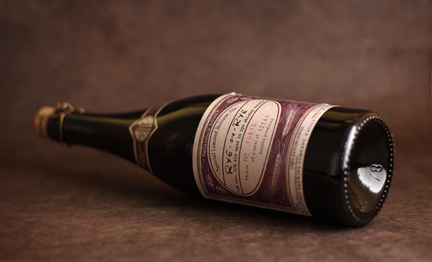What do brewers see in the spicy cereal grain?
By Zak Stambor
Just as almost every brewery produces one wheat beer, one pale ale and one stout, now, there’s seemingly a rye beer on every beer maker’s menu.
For proof of rye’s newfound ubiquity, just look at the number of rye beers entered in the 2010 World Beer Cup: In 2006, the category had just eight entries. In 2008, there were 17. This year, the competition saw 22. And those entries represent only a fraction of the actual growth, as the Cup’s strict guidelines only accept rye beers with at least 20 percent rye malt (many breweries use 10 to 15 percent) and low to medium hoppiness.
While rye-based beers like Bear Republic’s Hop Rod Rye (modern American brewing’s first rye brew, launched in 2000) and Terrapin Beer’s Rye Pale Ale have been around for a while, most of the early offerings were pale ales with rye in their mash to add a bit of spice. But in brewers’ never-ending quests to craft something distinct, the latest generation of rye beers is more extreme. Today you’ll find twists on the IPA, imperial versions and even some beers aged in used rye whiskey barrels.
Behind the rise of rye is the grain’s dry, spicy astringent characteristic that makes it ideal for highlighting hops’ bitter and fruity traits, says Spike Buckowski, Terrapin’s brewer and co-owner, who has used rye in his homebrew for nearly as long as he’s had a hand in the kettle. Professionally, he introduced Rye Pale Ale at his Georgia brewery in 2002 to beer drinkers who were relatively unfamiliar with the bold, aggressive West Coast IPA style; he wanted to produce a more subtle IPA that was hoppy yet balanced. That led him to rye; he combined it with four other malts, a blend of earthy English hops and citrusy Amarillo hops. The rye adds a hot note to the beer, which tricks the palate into sensing a clean finish, he says. “That means your tongue isn’t so overwhelmed by the hops that you only drink one beer,” says Buckowski. “And that’s exactly what we want.”
But Buckowski, like most craft brewers, isn’t content to keep things simple. That’s why he doubled the ingredients in Rye Pale Ale for Rye Squared, an 80-IBU, 8.5%-ABV imperial IPA. Thanks to rye, Squared isn’t an over-the-top hop monster, says Buckowski. “It’s not a tongue-dragger; it has a somewhat sweet finish.”
Rye doesn’t just offer brewers a way to temper aggressive flavors, it also gives them freedom to experiment, says Summit Brewing’s Mike Lundell, who recently brewed the brewery’s first-ever rye beer, the limited-release India Style Rye Ale. “Rye is perfect for experimentation because people have fewer expectations for what the beer should be like,” he says.
Even though Lundell loosely based his India Style Rye Ale on an IPA, he used chocolate rye malt to give the beer a smoky character. Nonchalantly, he figures, “If you use good ingredients in a careful way, you’ll probably get something decent.”
But just when brewers got the hang of brewing with rye, they struggled to age with it. Known for leaching intense peppery, spicy notes into beer, barrels that formerly housed rye whiskey aren’t the simple answer to storing rye beer. When he began toying with a rye beer aged in rye whiskey barrels, Boulevard Brewing brewmaster Steven Pauwels was stumped by the sharp, tart notes he found in Templeton Rye barrels. His only solution was to produce a rye beer that could stand up to the barrels’ strong flavors. Usually, his barrel-aged beers take three or four months to perfect; the aptly named Rye-on-Rye took 11. When it was ready, Pauwels found the whiskey notes too pronounced, so to balance the brew, he blended in a younger rye beer. The result is a complex, 11%-ABV beer with a mélange of pepper and vanilla characteristics from the barrel; bite from Perle, Magnum and Saphir hops; and, of course, ribbons of woody rye.
Rather than blend its beer to temper rye whiskey barrels’ strong flavors, Shmaltz Brewing embraced the intensity with its He’Brew Bittersweet Lenny’s R.I.P.A. on Rye. Buffalo Trace Distillery’s Sazerac 6-Year Rye Whiskey barrels highlight the three different rye malts in the base beer, a rye pale ale. “We wanted to play with the spiciness of the barrel and beer and make them both complementary and contrasting,” says Shmaltz’s Jeremy Cowan.
While Cowan’s barrel-aged beer is a limited release, he plans to unleash another batch this fall and a third next spring. The demand for new rye beers is unceasing, he says.
Boulevard’s Pauwels agrees. “Rye is unique without being overwhelming,” he says. “It offers brewers endless ways to produce new flavors. And that’s why it’s here to stay.” •
Try These Ryes
Three novel brews that reach beyond the rye P.A.
Saranac Rye Pilsener
Spicy rye can easily overpower lighter beer styles—not the case with this bright, chardonnay-scented pils. Pleasant biscuit notes start the swallow on a sweet note, but a mischievous dryness from rye and Vanguard hops makes this beer special.
He’Brew Bittersweet Lenny’s R.I.P.A.
This 10%-ABV monster smells of rich caramel, complex malts and alcohol, but it does a 180 on the tongue when hops, alcohol and sharp, super-spicy rye shoot down the tongue, leaving a dry mouth in their wake.
Great Divide Hoss
A bronze winner in both the 2009 GABF and 2010 World Cup, this marzen-based lager oozes malty freshness in the nose and palate. The rye’s not obvious here; look for an astringent hit of spice in the middle of the swallow and a dry finish.
